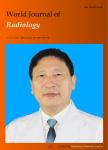Credentialing in radiology:Current practice and future challenges
Credentialing in radiology:Current practice and future challenges作者机构:Department of RadiologySouthmead Hospital
出 版 物:《World Journal of Radiology》 (世界放射学杂志(英文版)(电子版))
年 卷 期:2016年第8卷第5期
页 面:506-512页
学科分类:12[管理学] 1204[管理学-公共管理] 120402[管理学-社会医学与卫生事业管理(可授管理学、医学学位)] 1004[医学-公共卫生与预防医学(可授医学、理学学位)] 10[医学]
主 题:Credentialing Medical education Patient safety Radiology Accreditation
摘 要:Radiology has changed significantly in recent years. The volume of work has increased dramatically as has its complexity. Future radiologists need an adequate training and expertise in conventional practice as well as new techniques. This comes at a time when other stakeholders outside of radiology are voicing their own concerns. The rightly justified increasing focus on patient safety has placed even more emphasis on the demonstration of competent practice by all health care professionals. Credentialing has been put forward as a way to ensure a doctor is competent in specific areas. Credentialing may be an alien concept to many radiology trainees but moves are afoot in the United Kingdom to bring it to the forefront of its postgraduate medical training. Credentialing began in 20 th century North America where it was linked to the process of privileging. It subsequently garnered a strong patient safety focus and has become a part of the international healthcare agenda. Not everyone agrees with credentialing, it has many criticisms including the risk of speciality turf wars and the stifling of medical excellence to name just a couple. Is credentialing in radiology here to stay or will it pass by quietly? This paper reviews the global credentialing movement and discusses how this may impact on future radiology training, using the United Kingdom as its case example.



